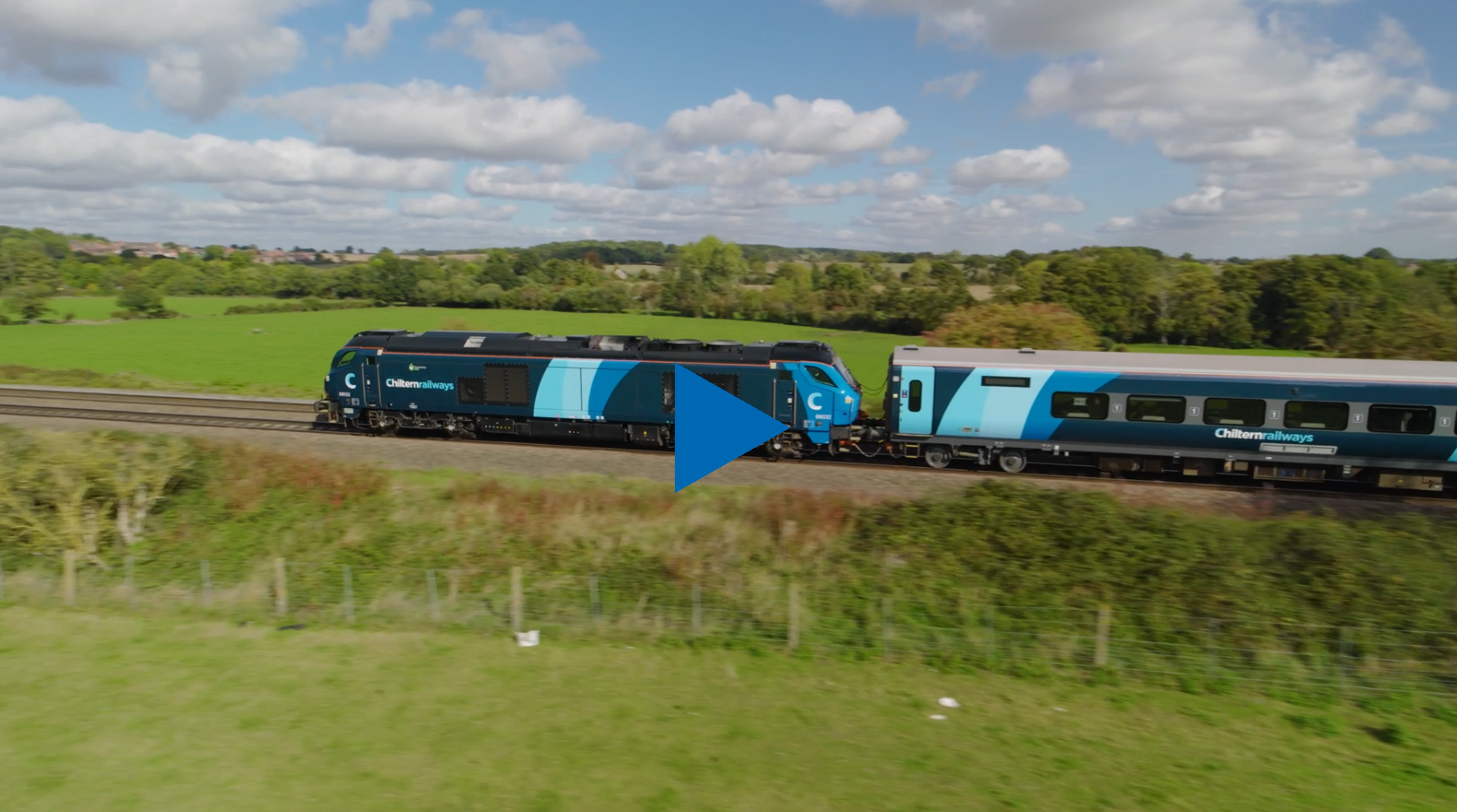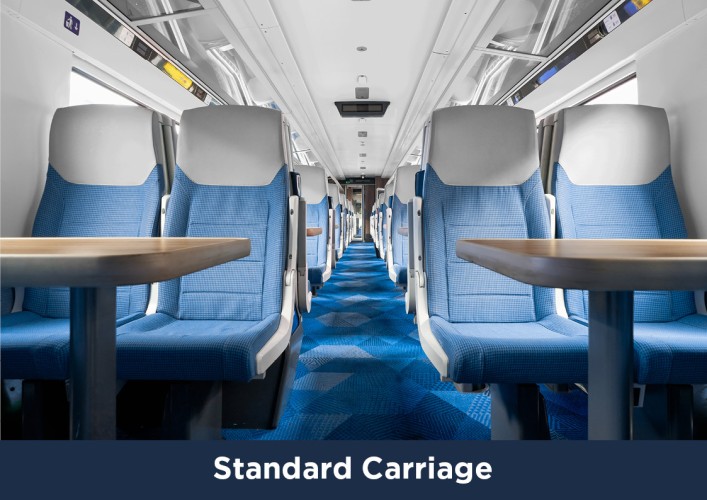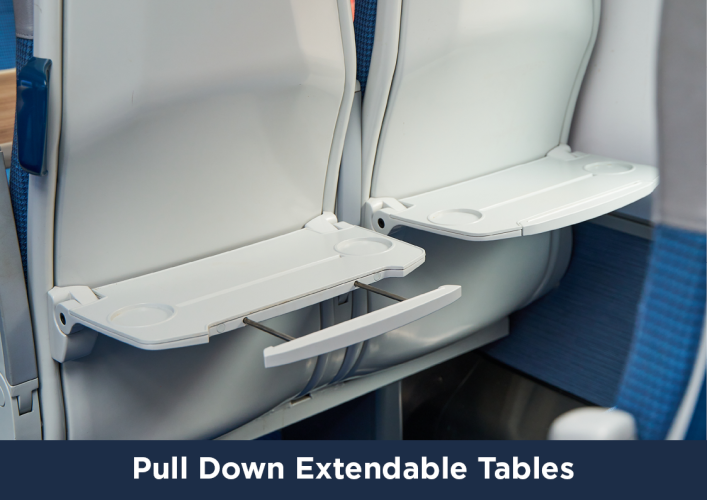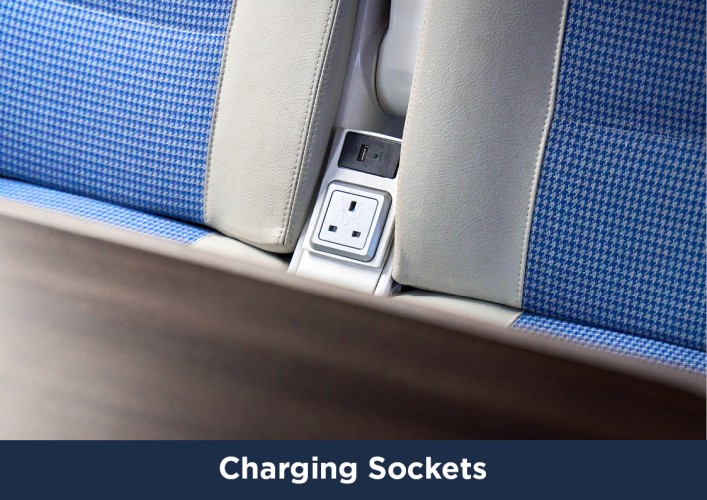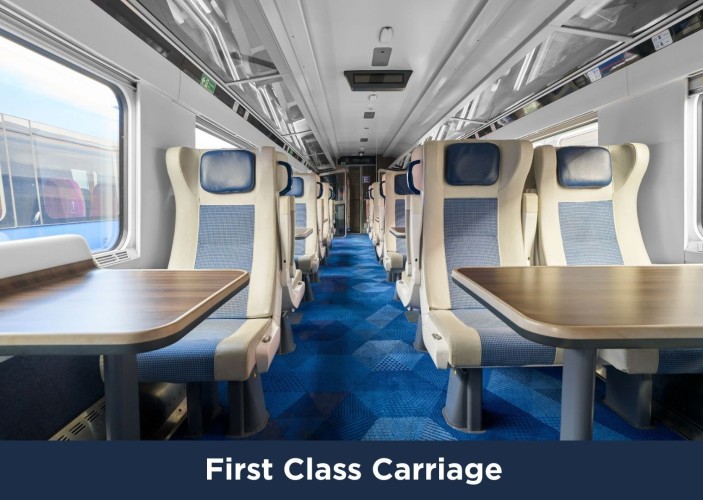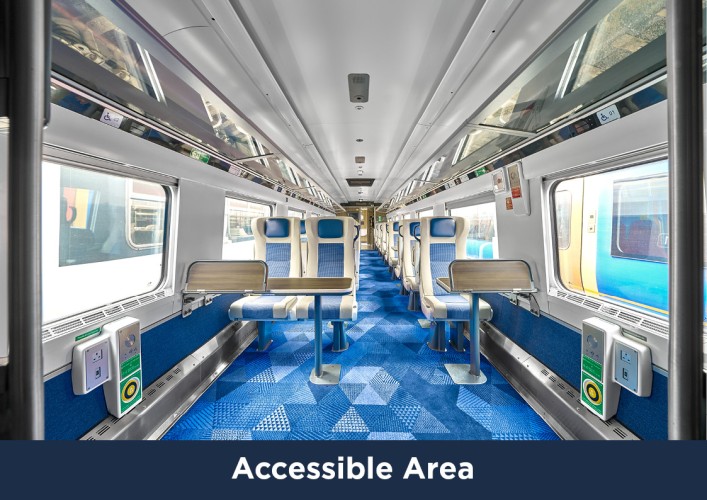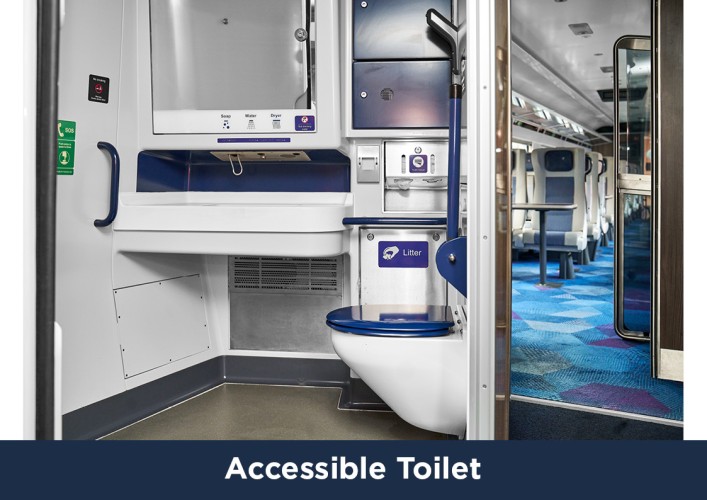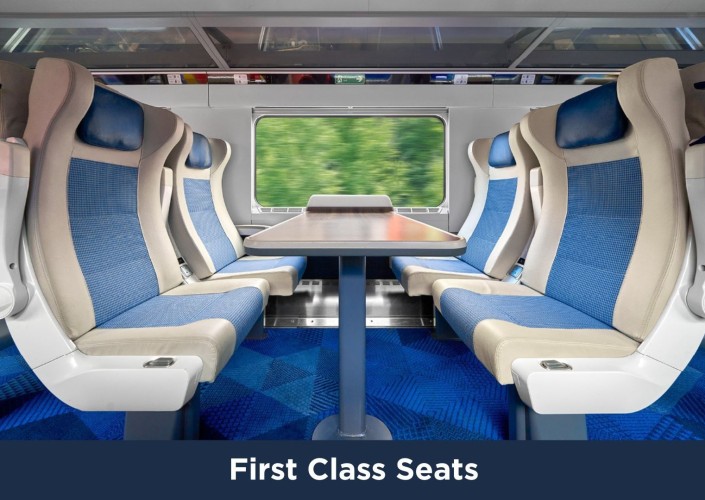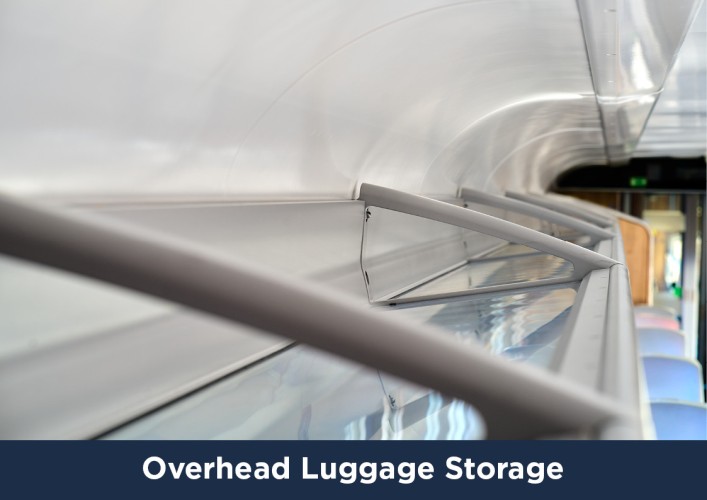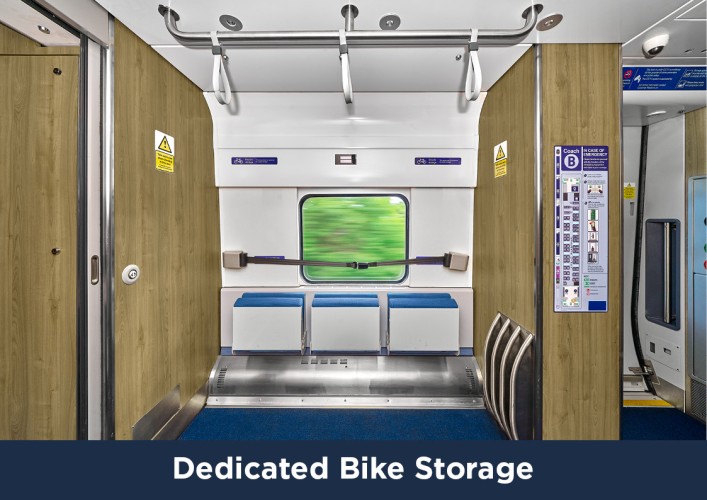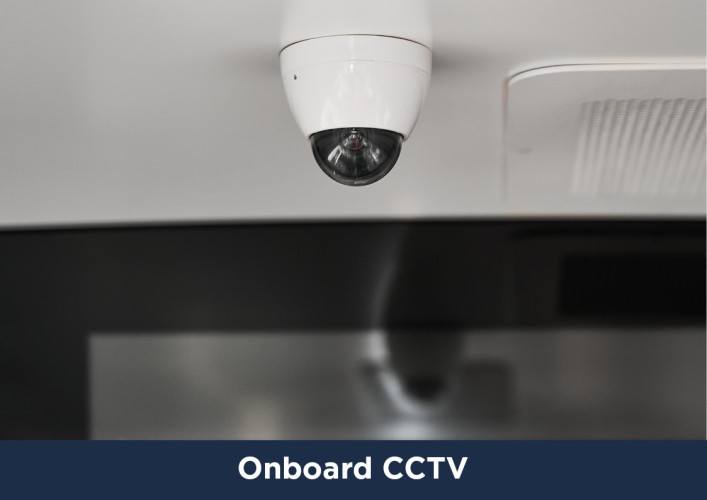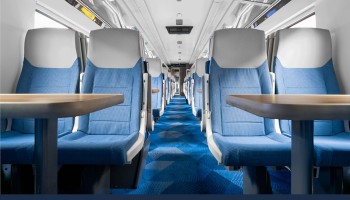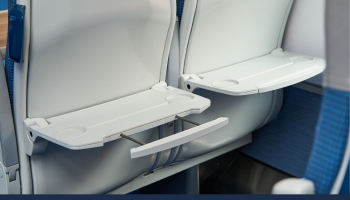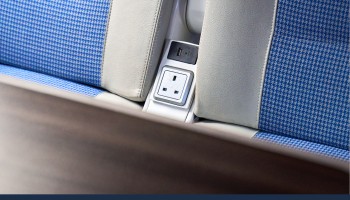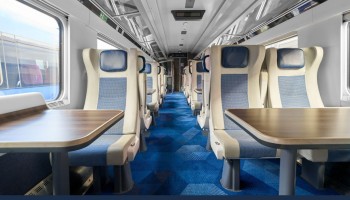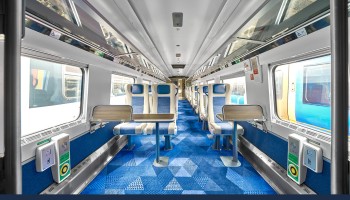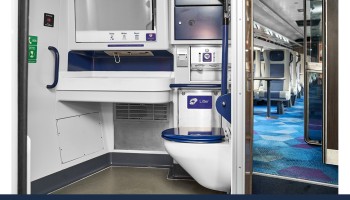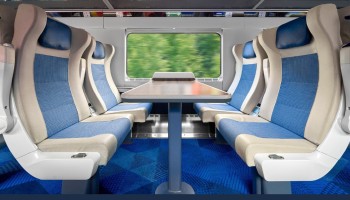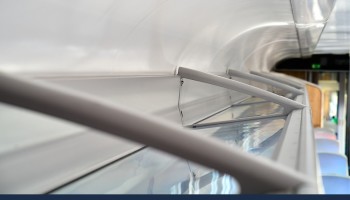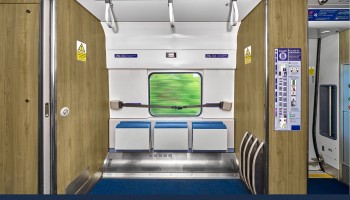We're excited to introduce our newer trains to the Chiltern network, designed with your comfort, convenience and accessibility in mind.
Our new trains bring many new features:
- First Class carriages offered as an on-the-day upgrade offering more spacious seats
- Automated onboard air conditioning that reacts to outdoor temperatures
- Fold down seat back tables with extendable sections for larger devices
- Spacious luggage racks in every carriage
- Dedicated bike storage for up to six bikes
- Plug sockets and USB ports at every seat
- Overhead luggage racks in every carriage
- Customer information display screens - both overhead and at the carriage ends to keep you informed throughout your journey
- 4 toilets on each train including one accessible toilet
- 2 dedicated accessible areas complete with companion seating, hearing loop
- Free onboard Wi-Fi
With all these amazing features whether you're commuting, cycling or travelling with family, our new trains are built to make your journey smoother and more enjoyable so you can go and explore more.
Take a sneak peek inside...
Where can you find the Mark 5As?

FAQs
When will the trains be in service?
We will gradually introduce the trains over the next year, starting in early 2026, on one of our three main routes, between London and the West Midlands. We're also working closely with the Department for Transport on plans to add more services to meet rising demand from late 2026.
Which stations will be served by the new Mark 5A trains?
The new fleet will operate on our route between London and the West Midlands. The calling pattern for these services will remain consistent with the newer trains. However, we are in discussion with the Department for Transport about expanding our timetabled services from late 2026.
What are the benefits for customers on other routes (e.g. Oxford, Stratford-upon-Avon, Aylesbury)?
These newer trains will deliver more reliable journeys on our route between London and the West Midlands. This will free up our existing trains (Class 168 and Class 165) for our other routes. This will result in customers seeing longer trains, which are also being refurbished with improved customer facilities over the next 18 months.
Will I be able to bring my bike onboard your new trains?
Yes, the new trains will have a dedicated space to store up to 6 bikes at a time. Our existing bike policy will remain in place, so we have a consistent offering across our network. More information can be found at: Taking Bikes On Our Trains | Chiltern Railways
Is there going to be First Class?
We are excited to bring back First Class carriages on board our newest trains. During our phased introduction of the new trains throughout 2026, seats in First will be offered as an on-the-day upgrade available to purchase from our on-board staff. Once we have all our new trains in place, a First Class ticket will be available to purchase in advance, currently expected in December 2026.
Are these trains replacing the Mark 3s?
Yes, the new trains will be slowly introduced as the Mark 3s are retired from our train fleet.
What's happening to the Mark 3s once they are retired?
They will be returned to Arriva Trains Holdings Ltd, the company that we lease them from, and their future use is still to be determined by them.
How is this better for the environment?
The trains run on Hydrotreated Vegetable Oil (HVO) fuel, a renewable fuel that reduces carbon emissions and cuts pollutants such as nitrous oxide compared to conventional diesel—part of our efforts to decarbonise Chiltern. By December 2026, ~20% of our fuel use will be HVO, compared to 7% today.
We're taking steps to reduce local impacts:
- At Stourbridge depot, we are installing an electrical supply so trains can be powered down overnight rather than running with their engines on as key tasks like cleaning and maintenance are carried out.
- All (Class 68) locomotives in the new fleet will be fitted with automatic stop-start technology, reducing engine use while stationary, especially at terminus stations like Marylebone.
- We’re introducing noise and vibration modifications to the (Class 68) locomotives engines to further reduce the impact on lineside communities.
- Our drivers are being trained to minimise unnecessary idling and engine vibrations during layovers.
We will continue to engage with residents, local authorities, and stakeholders at stations like Marylebone, Aylesbury, and Birmingham to listen to concerns and provide regular updates on how these improvements will make a real difference.
In the medium term, we are working with the Government on a business case for full decarbonisation, by introducing battery-electric trains and network electrification, building on our successful transition to HVO fuel.


